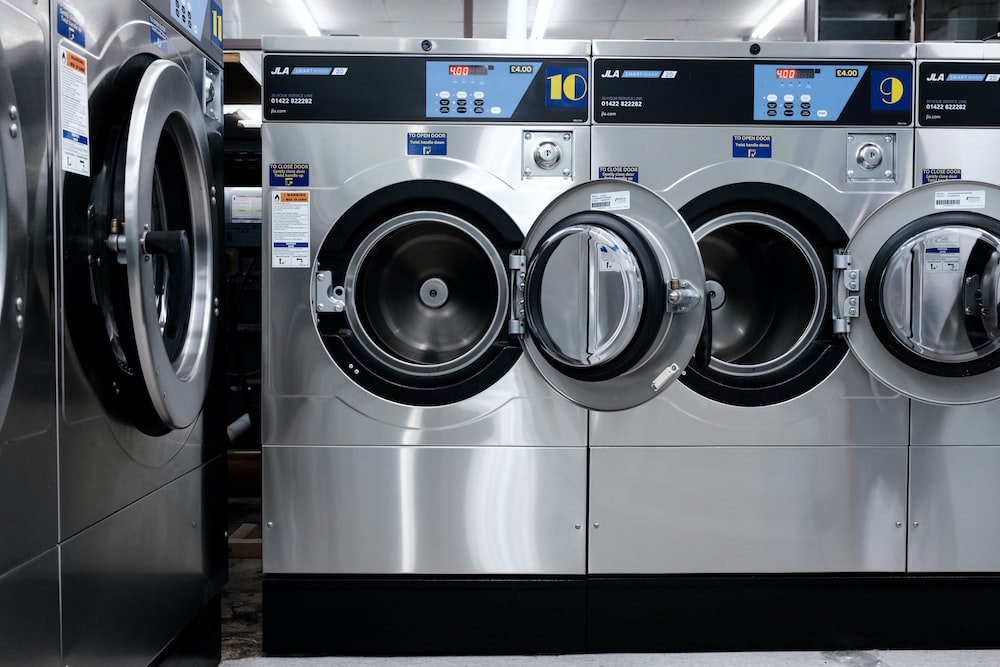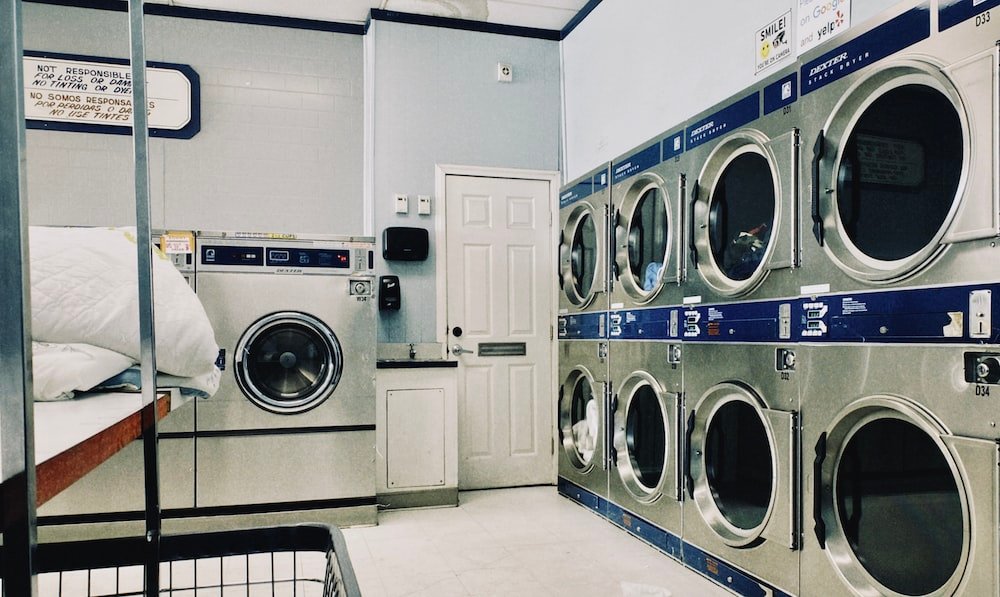Looking to turn the deafening roar of your washer and dryer into a soothing whisper? You’ve come to the right place! In this guide, you’ll discover practical solutions for soundproofing a laundry closet. With step-by-step instructions, your laundry room will transform from a disruptive noise factory to a peaceful space.
Find out how to reduce noise, enjoy a quieter home environment, and get your laundry done without the racket. So, let’s make the change and embrace quietness like never before!
Understanding Soundproofing
Soundproofing can be an amazing way to create a serene, quiet, and peaceful atmosphere within your living spaces. However, to effectively install soundproof measures, it is important to comprehend the basics of soundproofing.
Basics of soundproofing
Soundproofing involves the inhibition of sound from entering or exiting a specific enclosure. This is achieved by manipulating the properties of sound, such as blocking, absorbing, and isolating the sound waves.
Why soundproof a laundry closet
A laundry closet can be an unexpected source of noise due to the ongoing activities like washing and drying of clothes. The continuous humming, vibrations and odd rattling and thumping sounds can disrupt your peace, whether you are trying to concentrate on work or sleep.
Therefore, soundproofing your laundry closet becomes critical in preserving quietness and tranquility in your household.
Types of noises to block
Understanding the types of sounds you need to block is key. These could include the operational noise from the washing machine or dryer, like water filling or pumping, turning of the drum, or even the sound of buttons and zips hitting the drum during the washing cycle.
Assessing Your Space
Before starting the soundproofing process, you need to evaluate your laundry closet. Module your soundproofing efforts based on your unique needs.
Identifying sources of noise
Start by identifying the primary sources of noise. This likely includes your washing machine and dryer, including any rattling pipes. Be aware of any other potential sources like squeaky doors or windows that can add to the noise output.
Taking measurements of your laundry closet
Make sure to accurately measure your laundry closet before acquiring materials. Measure the dimensions of the walls, floor, and ceiling, along with the door and any windows. This will allow you to estimate how much material you need accurately.
Evaluating your current set-up
Evaluate your current setup including the type of materials used in your walls, floor, and ceiling. The type and density of these materials can greatly affect the success of your soundproofing efforts.

Soundproofing Materials
Knowledge about soundproofing materials is important in ensuring its effectiveness. Depending on your specific situation, some materials might work better than others.
The role of different materials in soundproofing
Different materials perform distinct roles. Heavy, dense materials like drywall and mass-loaded vinyl can block sound, while soft, light materials like foam, help absorb sound and reduce echo.
Understanding which materials you need
Based on your needs, you will likely need a combination of both sound-blocking and sound-absorbing materials.
If your aim is to simply minimize the sound within the closet, then sound-absorbing materials would suffice. However, if you’re aiming to stop the sound from leaving the closet, then you’ll also require sound-blocking materials.
Where to purchase soundproofing materials
Your local home improvement store will likely carry various soundproof material. Additionally, numerous online retailers specialize in soundproofing solutions.
DIY vs. Hiring a Professional
The next step is to determine whether to DIY or hire a professional. This is dependent on your level of comfort, time, and budget.
Pros and cons of doing it yourself
Doing it yourself can be a rewarding experience and is generally more cost-effective. However, it requires time, energy, and specific skill sets to execute properly.
When to hire a professional
If you feel that the project is too complex or you don’t have the time to take it on, a professional can ensure that the job is done right.
Cost comparison
While hiring a professional can be more expensive initially, it could potentially save you from costly redos in case you make mistakes during a DIY project.

Soundproofing the Walls
Walls play a crucial role in soundproofing your laundry closet. Let’s see how to do it.
Techniques to reduce noise through walls
Using a combination of an additional layer of drywall, soundproofing sealants, and acoustic foam panels can significantly reduce noises through the walls.
Installing acoustic panels
Acoustic panels can greatly absorb direct and reflected noise. To install them, simply mount them on the walls following the manufacturer’s instructions.
Using soundproofing sealants
Soundproofing sealants are used to fill gaps and cracks where noise can leak through.
Soundproofing the Floor
The floor also plays a crucial role in sound transmission. Here’s how to soundproof the floor of your laundry closet.
Benefits of soundproofing the floor
Soundproofing your floor can help reduce vibrations and noise from traveling to other spaces in your home.
Using soundproof mats
These mats are designed to absorb vibrations, perfect for beneath your washing machine and dryer.
Installing underlayments
Adding an underlayment to your existing floor can increase the sound-blocking properties, though it can be a bit more involved than just adding a mat.

Soundproofing the Door
A soundproof door can make a substantial difference in mitigating noise.
Importance of a soundproofing the door
Even when the walls, ceiling, and floor are soundproofed, if the door isn’t, noise will find its way out.
Gaps and seals
Sealing gaps around the door frame and between the door and the floor can keep noise from slipping out.
Changing the door
If your current door is hollow, consider replacing it with a solid core door which can block a considerable amount of noise.
Soundproofing the Ceiling
Soundproofing the ceiling can be a bit challenging but it’s worth the effort.
Challenges of soundproofing the ceiling
The structure of the ceiling and the fact that it’s the highest point in the room can make soundproofing challenging.
Using resilient channels
Resilient channels can be installed to create a space between your ceiling and the floor above it, thereby weakening the path of the sound.
Soundproof tiles and panels
These can add mass to your ceiling, thereby reducing the ability of sound to pass through.
Maintaining Your Soundproof Closet
Once you’ve soundproofed your laundry closet, regular maintenance can ensure long lasting peace.
Regular checks for gaps and damage
Conduct regular checks for any damage to your soundproofing materials or newfound gaps where sound could potentially escape.
Repairing and upgrading soundproofing materials
Ensure you repair any damages and consider upgrades to your soundproofing as new material and technologies become available.
Dealing with evolving noise sources
Your appliances might age or you might acquire new ones which are noisier. Adapting your soundproofing to handle the evolving noise sources is essential in maintaining the tranquil environment.
Considerations for Apartment Living
When living in shared spaces like an apartment, there are additional considerations to bear in mind.
Soundproofing in shared spaces
Soundproofing solutions can help reduce noise pollution in shared spaces, beneficial for maintaining good neighbourly relations.
Talking to your landlord about noise
It’s essential to talk to your landlord before undertaking any major changes, they might even be willing to cover a part of the cost.
Neighbor considerations
Always consider your neighbors when planning to undertake this operation for their comfort as well as your own.
In conclusion, soundproofing your laundry closet can substantially contribute to the tranquility of your home. Armed with this knowledge, you are fully equipped to take on this beneficial home improvement project. Good luck!




